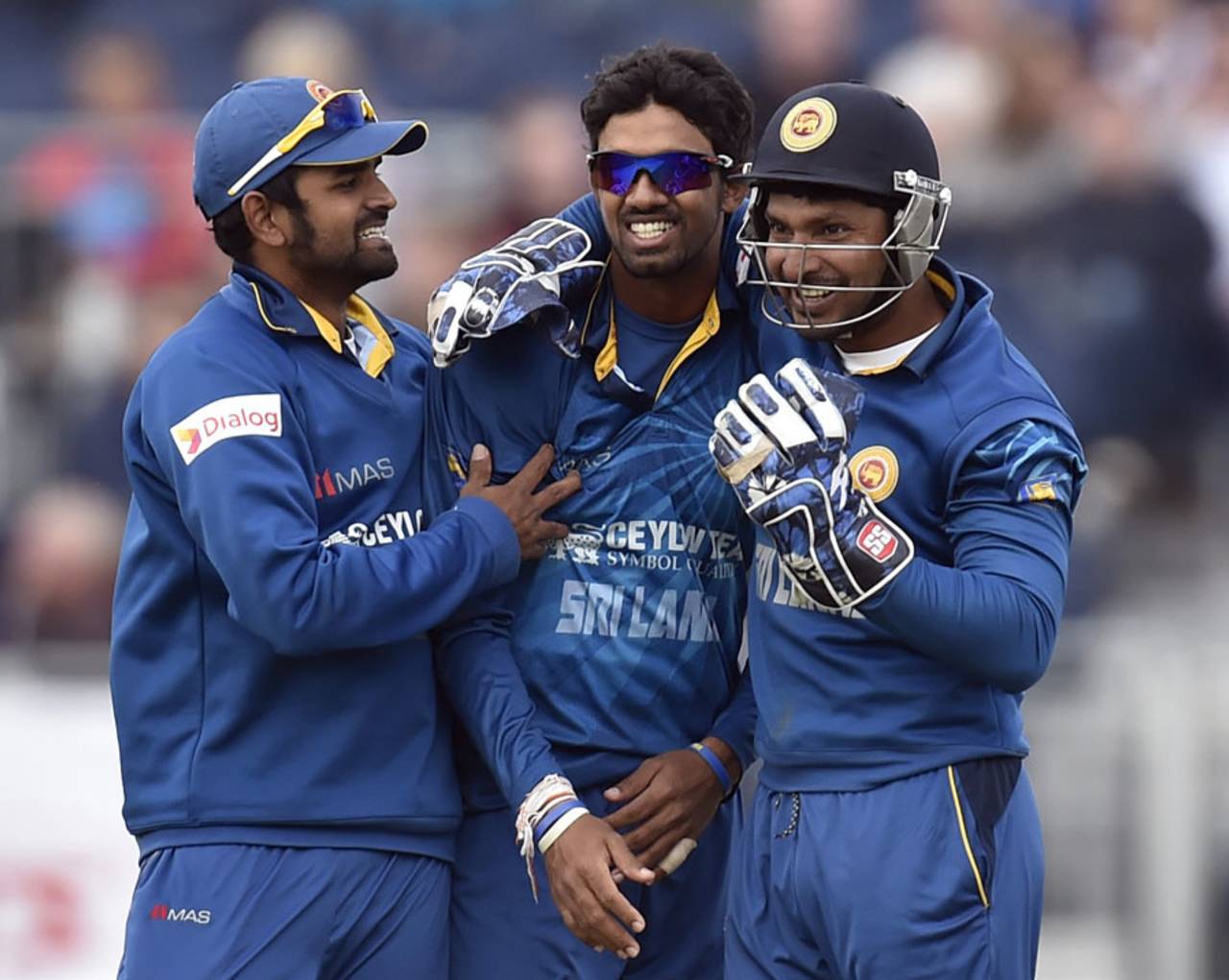At times on those steamy floodlit nights at the Premadasa Stadium, the pitch appears to be
laced with poison when Sri Lanka are defending a score. Teams often begin well against the hosts; openers cracking boundaries, required rate heading south. But Sri Lanka bide their time. They are in collusion with the clay.
Eventually, there will come a time, they know, when the toxins in the surface begin to seep through the batsmen's shoes. Their legs grow heavy. Hands become less sure. Their eyes fail to read the spin, and before long, poison has spread to the entire opposition dressing room. Batsmen arrive at the crease already corrupted. They play part-time spin like the bowler is lobbing grenades. Fielders surrounding them are in a frenzy. The require rate shoots up again. The chase is derailed.
Perhaps Sri Lanka had sought to bring this South Asian slow death to the World Cup when they stacked their squad with four spin-bowling options. But as they have
lost a series to New Zealand and bled runs through the opening stages of the World Cup, they have seen that squeezing does not work in this part of the world. Drop-in pitches are not spiked with poison.
They have seen, but have they learned? Sri Lanka fielded four frontline bowlers, but have since returned to a formula that proved untenable in the previous series. In January, Sri Lanka persisted with only three frontline options, and hoped to get 20 overs out of their allrounders and part-timers. Match after match, it was now the opposition biding their time, conserving wickets early to exploit Sri Lanka's lack of bowling depth towards the end.
England's innings against Sri Lanka observed a familiar script. After 35 overs, England were 161 for 4. Then Joe Root and Jos Buttler began to charge, reverse-scooping quicks for six, and slamming near-yorkers over the deep cover fence, and 148 was reaped from the last 90 balls. Amid the mayhem was a 25-run over from Thisara Perera. When Suranga Lakmal was taken out of attack for bowling two dangerous full tosses, Sri Lanka appeared to be coming undone. On the players' faces were writ the same frustrations they had known in places like Kolkata, during that
Rohit Sharma rampage, or in Dunedin as Grant Elliott and Luke Ronchi
amassed the biggest sixth-wicket stand in ODIs.
Bowling has long been Sri Lanka's stronger suit in world events. The five recent runs to the final had seen a wonderfully varied and menacing attack at the core of the campaign. Lasith Malinga's precision had not wavered between the 2007 World Cup and 2014 World T20.
Muttiah Muralitharan threatened during the middle of the innings.
Nuwan Kulasekara had brought inswing and consistency, and in more recent years,
Rangana Herath has turned matches on his own.
But when the attack has floundered at the top end of this tournament, Sri Lanka have thinned the bowling stocks instead of bolstering them. In his ICC column, Murali himself has found it strange. "One thing is clear after Sri Lanka's great run-chase against England in Wellington: the make-up of the side needs a re-think," he said. "The bowling is very obviously proving a big weakness and a major headache for captain Angelo Mathews, especially in the closing overs of an innings."
"The attack failing to restrict the opposition means having seven specialist batsmen is a waste of a spot. The need is to be positive and back six specialist batsmen to do the job"
Murali advocates for Kulasekara's re-inclusion, but Sri Lanka also have young tearaway
Dushmantha Chameera in the wings, should Kulasekara's past form continue to elude him. Also awaiting his first World Cup match is
Sachithra Senanayake. If Sri Lanka secure their place in the quarter-final, they will be tempted to play both frontline spinners in Sydney. The injury to Herath's finger may give Senanayake an opportunity at the SCG on Sunday, against Australia.
Four of Sri Lanka's top five batsmen have hit hundreds in the tournament. The opening combination that had so long been the team's bane, has struck up two hundred-stands on the trot. The top order has hit 644 runs for two wickets in the past two matches without even calling on Mahela Jayawardene, who may move to no. 5 to balance the XI further.
Sri Lanka have spoken of needing several bowlers to peak if they are to rattle the more favoured sides in the knockouts. The batsmen are buying the bowlers some time. The team might do well to retool the combination to suit the tracks they are presently playing on.
